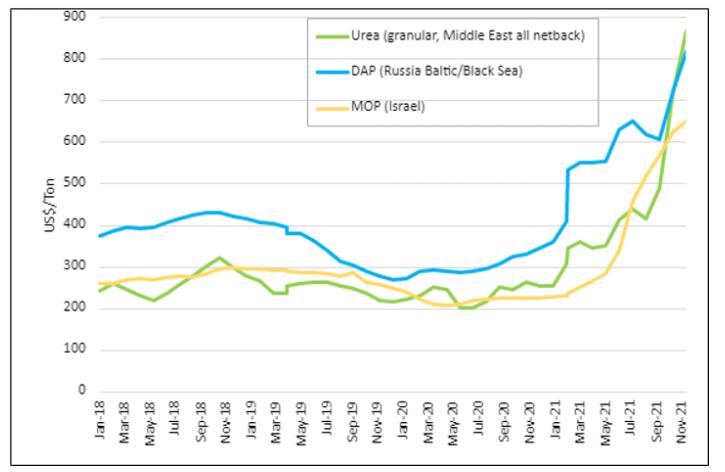
Exhibition time: 17-19 March, 2026 Shanghai, China
 中文
中文

Exhibition time: 17-19 March, 2026 Shanghai, China
 中文
中文
Key words of the passage: Africa; fertilizer; price; farmer; food security
“Two out of every five people on Earth today owe their lives to the higher crop outputs that fertilizer has made possible.” —Bill Gates, Wired.com
Sustainable farming systems are based on soil nutrients, but what happens when farmers can no longer access or afford the fertilizers that provide most of these nutrients?
In the second quarter of 2021, global fertilizer prices began to drastically increase. This was driven by various factors, but especially the increase in natural gas prices and freight rates.

Figure 1: Three-year average FOB prices for fertilizers commonly used in sub-Saharan Africa for
straight applications and local blending (https://africafertilizer.org/international-prices/)
Farmers in more developed markets have been somewhat shielded from this price trend, with better crop:fertilizer price ratios than farmers in sub-Saharan Africa (SSA). According to IFDC estimates, SSA could experience a 30% decline in fertilizer demand in 2021. Should fertilizer prices remain higher than the past years’ averages, demand could plummet even further. The consequence will be devastating: a reduction of 30%, or approximately 2 million metric tons (mt), in 2022 translates to 30 million mt less food produced, equivalent to the food requirement of 100 million people. This comes with significant repercussions and will further increase food imports into Africa, while global food prices continue to rise.
The huge variation between crop prices and fertilizer prices, coupled with limited global fertilizer availability, has resulted in an overwhelming downturn in demand in most sub-Saharan African countries. SSA is a net importer of fertilizers; disparity in the global market has exposed the vulnerabilities of the agro-input sector in Africa.
Some countries in Africa, such as Malawi, have had to reform their subsidy programs and limit beneficiaries to only the most resource-poor farmers, while other governments, such as Tanzania, have pulled out of centralized procurement systems altogether.
Overall, the unavailability and unaffordability of fertilizers is expected to negatively impact food systems in Africa in the mid-term. This will leave hundreds of millions of people vulnerable to hunger. Reduced yields and subsequent higher food prices will be a major driver of inflation and a major threat to food security and political stability in many sub-Saharan African countries.
A pan-African solution is required to address continental fertilizer capacity and availability to farmers. Serious long-term investments are required to increase the continent’s fertilizer production capacity.
The fertilizers that are used need to be used more efficiently. Knowledge on fertilizer usage, nutrient use efficiency (NUE), balanced fertilizers, and crop- and soil-specific fertilizers must be widely promoted among African farmers to maximize their farming ventures’ returns on investment.
Finally, availability of data will play a key role in informing strategic business and policy decisions. African governments, the fertilizer industry and other stakeholders will increasingly rely on timely information regarding changes in the global fertilizer markets, which will allow them to understand when best to position fertilizer availability for their farmers. That’s what IFDC’s AfricaFertilizer.org (AFO) initiative has been committed to since 2009: making fertilizer information in Africa available to all.
Source: IFDC
